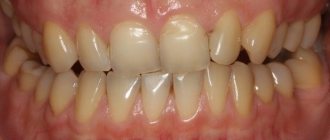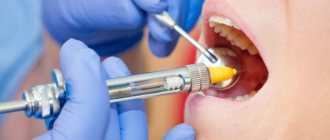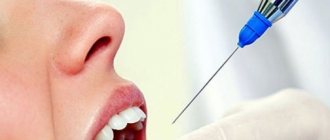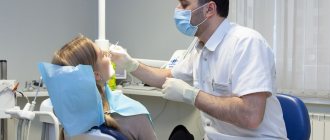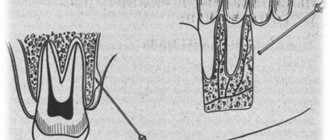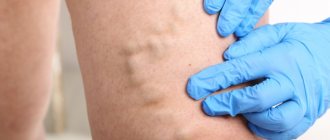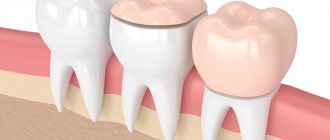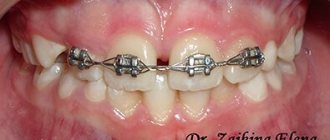Local anesthesia is the blockade of pain impulses at various levels (except the brain) during operations or manipulations. Local anesthesia does not require “turning off” consciousness and is usually performed with the help of pharmacological drugs - anesthetics.
For local anesthesia, syringes from 1 to 10 ml and needles of various lengths and diameters are used. The most commonly used anesthetics are lidocaine and novocaine in concentrations from 0.25% to 2%.
Depending on the level of pain blocking, the following are distinguished:
- Terminal anesthesia (effects only on peripheral pain receptors)
- Infiltration anesthesia (impact on tissue in the surgical area)
- Conduction anesthesia (blockade of peripheral nerves above the intervention area)
- Epidural and spinal anesthesia (pain impulses are blocked at the level of the spinal cord)
Infiltration anesthesia
It is widely used in outpatient surgery (for example, for opening abscesses, removing lipomas, atheromas), as well as in hospitals for minor interventions on soft tissues (for example, inguinal or umbilical hernia). In some cases, infiltration anesthesia is used in cases where anesthesia is dangerous for the patient for some reason. After the administration of the anesthetic, its effect occurs immediately; there is no need to wait before intervention (as, for example, with conduction anesthesia). For infiltration anesthesia, novocaine and lidocaine are usually used in a concentration of 0.25% to 2%.
Advantages
The preference for using this method in dentistry is due to the following advantages:
- the ability to block sensitivity over a large area of the jaw for the alternate removal of several units of the dentition, opening purulent abscesses;
- the need to use a small amount of the drug compared to alternative methods of pain relief.
It is worth highlighting a number of advantages associated with minimizing the likelihood of complications:
- reduced risk of developing neuropathic syndromes;
- there is no possibility of the solution penetrating into the vessels;
- improving the quality of blocking the sensitivity of nerve endings;
- high efficiency for operations of any complexity.
Indications
Conduction anesthesia is performed before the following therapeutic measures:
- simultaneous extraction of several units of the dentition located in one area of the oral cavity;
- removal of tooth roots with inflammatory processes;
- removal of pathological teeth (for example, those that have grown into the gums);
- implantology (used for painless implantation);
- surgical intervention on the lower molars (molars);
- treatment of inflammation in the maxillofacial region;
- elimination of inflammation on mucous membranes and soft tissues;
- treatment of complex carious cavities;
- with intolerance to general anesthesia.
Maxillary anesthesia
- Palatal method. Allows you to completely block sensitivity in the palate area, making any manipulation absolutely painless. The action of the anesthetic spreads simultaneously to the alveolar process.
- Tuberal. This technique is used for operations or extraction of molars.
- Infraorbital. Suitable for treating canines, premolars, and incisors.
- Incisive. Anesthesia is injected into the mucosal area located between the incisors and canines.
Mandibular anesthesia
- Mental way. It is carried out for the treatment of premolars, incisors, and canines.
- Mandibular. It involves blocking all units of the dentition on the side where the drug is administered.
- Torusal. Involves the introduction of a solution into the roller of the movable jaw, called the torus. Allows you to block pain symptoms in the area of premolars, as well as molars.
There is another Bershe Dubov method. It is used for maxillofacial surgical interventions. Anesthesia applies to all elements on one side. The needle can be inserted intraorally or extraorally.
Restrictions
Before choosing a pain relief method, it is important to exclude contraindications. These include:
- some operations performed on patients under 12 years of age;
- disturbance of the psycho-emotional state in a pronounced form;
- skin diseases in the area of intervention;
- allergic reactions to antiseptics;
- patients with congenital deaf-muteness;
- inability to establish contact with the patient.
Conduction anesthesia
With conduction anesthesia, the anesthetic is injected into the area of the nerve trunk that innervates the surgical area. For example, during operations on the fingers, the anesthetic is injected at the base of the finger, and during operations on the upper limb - into the brachial plexus area. For conduction anesthesia, higher concentrations of anesthetics are used (1-2% solutions of lidocaine and novocaine), but in smaller volumes than for infiltration anesthesia. After administration of the anesthetic, complete anesthesia requires time (5-10 minutes), during which the anesthetic penetrates the entire thickness of the nerve.
Indications for local injection anesthesia
Most dental treatment is performed under local anesthesia.
It is mandatory to use:
- Removing a nerve from a tooth
- Gum operations – gum plastic surgery, deep periodontal cleaning – curettage and others.
- Installation of orthopedic structures on living teeth.
- Removal of any teeth and roots, as well as oral surgery
During minor interventions, such as the treatment of superficial caries, some patients can easily do without any anesthesia at all.
There are also types of treatments in dentistry for which anesthesia is not usually given, but there are people with increased sensitivity and a low pain threshold who may need it.
- Teeth cleaning by a hygienist
- Artistic restoration without preparation
- Making removable dentures - at the stage of taking impressions, anesthesia is sometimes given to people with an increased gag reflex
In pediatric dentistry, there is no need to rush with anesthesia - the sensitivity of the internal tooth tissue - dentin - is less pronounced in children than in adults. Therefore, first you need to try to prepare the tooth without an injection - and give anesthesia only at the request of the child. After all, many children are afraid of an injection more than anything else, and after it they may simply refuse to open their mouth again.
Substitute for cocaine
The safety of anesthesia largely depends on which drug the doctor chooses. Local anesthetics are divided into amide and ether. One of the oldest painkillers is novocaine. It was first synthesized back in 1898 by German chemist Alfred Einhorn and replaced cocaine used at that time for local anesthesia.
“Today, novocaine is used extremely rarely as an anesthetic drug. It has a very long latent period, that is, it acts after 10, 15, or even 20 minutes. Now there is too little time allocated to see a patient, so it is not possible to wait 20 minutes for the anesthesia to take effect,” said Elena Zorian, Candidate of Medical Sciences, Associate Professor of the Department of Pain Management in Dentistry at Moscow State Medical and Dental University (MGMSU).
According to the specialist, novocaine is usually contained in ampoules, which means it is almost impossible to maintain the sterility of the anesthetic. The drug has other disadvantages.
“Novocaine dilates blood vessels, so before the anesthesia was very weak and did not last long. To increase the duration of action, adrenaline was added. However, it was, of course, impossible to confirm the accuracy of the dosage in this case,” explained the dentist with 50 years of experience.
To the teeth! Vaccination against caries is a matter of the near future
More details
Choosing anesthesia in dentistry
The relevance of the problem of a dentist choosing a local anesthetic is confirmed by the fact that, as a rule, a multicomponent compound enters the internal environment of the patient’s body during local anesthesia. Thus, ingestion of catecholamines, which are used as vasoconstrictors, can lead to increased blood pressure and heart rate, hyperglycemia and other undesirable consequences (A. Zh. Petrikas et al., 1997; Yu. F. Krylov et al., 2000; S. Malamed, 2000). Various components of a local anesthetic drug can be very dangerous in patients at risk (E. V. Zoryan et al., 1997; V. I. Stosh et al., 1998; P. I. Ivasenko et al., 2000). This factor is of particular importance in light of the results of a survey conducted by employees of the Department of Therapeutic Dentistry of St. Petersburg State Medical University named after. acad. I. P. Pavlova: about 68% of the 406 dental patients surveyed at the city dental clinic could be classified as high-risk patients. Stabilizers and preservatives are often the causes of allergic reactions in patients (P. I. Ivasenko et al., 2004). At the same time, our oral surveys and questionnaires among dentists show clearly insufficient knowledge regarding the following points:
Components of a local anesthetic drug most often used by a dentist.
The influence of various components included in anesthetics on the somatic status of the patient.
Risk groups in relation to local anesthetic drugs.
Age restrictions on the use of drugs stated by manufacturers.
Restrictions (contraindications) stated by manufacturers of anesthetics.
Poor knowledge regarding the composition of local anesthetics, risk groups and contraindications is aggravated by the rare aspiration test and rapid (carpule in 10–15 seconds) administration of the drug. Some doctors simply do not know about the existence of such carpule syringes and carpules that allow them to perform an aspiration test. These factors together determine a fairly high incidence of somatic complications during local anesthesia.
Next, we will consider an algorithm for the safe selection of a local anesthetic, provide data that allows you to choose an anesthetic in relation to various risk groups, and give recommendations for a minimum set of various drugs “for all occasions.”
Algorithm for safe selection of local anesthetic.
Duration, type of planned intervention. This factor influences the doctor’s choice of anesthetic, based on the concentration of the vasoconstrictor in the anesthesia, which will determine the duration of anesthesia. In addition, according to a large number of dentists, anesthesia without a vasoconstrictor has a less effective analgesic effect. At the same time, there is a fairly rational recommendation to add an anesthetic, naturally, taking into account its maximum therapeutic concentration. Following this recommendation leads to improved pain relief. Considering the difference in the concentration of epinephrine (its absence), the choice can be made from the following drugs: ubistezin forte, ubistezin, ultracaine DS, mepivastezin.
Accompanying illnesses.
The most “dangerous” from the point of view of urgent conditions are patients of the following risk groups: heart disease, vascular disease, arterial hypertension, central nervous system diseases, liver and kidney diseases, glaucoma. Particular attention should be paid to decompensated forms of any disease. Epinephrine as part of local anesthesia is, as a rule, contraindicated in such patients. We discuss in detail how a dentist can determine the stage of a patient’s somatic disease in classes with dentists, and information about this was in previous publications. Anesthetics that meet the safety requirement for a minimum concentration of epinephrine or its complete absence: ubistezin, septanest, ultracaine DS, ultracaine D, mepivastezin. It is advisable to remember that mepivastezin, having mepivacaine as its main active principle, independently has a vasoconstrictor effect without vasopressors.
Anesthetic tolerance.
Patients often know which drug they tolerate best. Without going into detail about the placebo effect, it makes sense to take this information into account when choosing a drug. In addition, for some patients the dose is a significant factor. They can react “toxically” to a therapeutic dose even without the drug entering the vessel.
Allergy.
By specifically distinguishing allergies from concomitant diseases, we draw attention to the fact that patients often do not consider allergies to be a disease. And thus, during an oral interview, they can mislead the doctor about the presence of allergic diseases. Let's take into account two factors:
1. Allergies often develop not to the anesthetic itself, but to its components (preservatives and stabilizers);
2. Allergization of the population exists and is growing due to the consumption of foods and the use of medications containing preservatives and stabilizers. We can conclude: the fewer parabens, sulfites and editic acid in the local anesthetic, the less likely it is to cause an allergic reaction in the patient. This recommendation is best met by the drugs ubistezin, ubistezin forte, ultracaine D, and mepivastezin. Carpules with a protective film (ubistezin) guarantee greater safety of the drug, therefore editic acid, one of the components that causes allergic reactions, was removed from such carpules.
Hypoproteinemia.
It is known that the more a drug binds to proteins, the less systemic toxicity it has. At the same time, patients with hypoproteinemia of any origin are at risk for systemic reactions. Consequently, drugs based on articaine (ubistezin, septanest, ultracaine) are the drugs of choice in this case.
Pregnancy and lactation.
Preparations of the articaine group, officially being the least toxic, are recommended for use in pregnant women. It is also possible to use them during lactation. You should carefully read the instructions for the drug and if there are instructions that the drug should be used with caution in pregnant women, perform anesthesia with caution, that is, do an aspiration test, administer the drug fractionally (in 3 doses) and slowly, carpule in 1 minute. Group of drugs of choice: ubistezin, ultracaine, septanest. It is imperative to take into account the recommendation of obstetricians and gynecologists to treat pregnant women only in the second trimester and, preferably, preventive treatment of women planning a pregnancy.
Taking medications.
There are strict contraindications for combining certain drugs with epinephrine as part of local anesthesia: cardiac glycosides (for example, digoxin): non-selective beta blockers (for example, anaprilin), MAO inhibitors (for example, aminazine). A local anesthetic with low epinephrine content should be used with caution in patients taking ACE inhibitors (for example, Enap), clonidine, rauwolfia preparations, thyroid hormones. Group of choice of local anesthetics: mepivastezin, ultracaine D, ubistezin, ultracaine, septanest. Some medications have a toxic effect on the liver and worsen kidney function. This factor is discussed below.
Pseudocholinesterase deficiency.
Essential local anesthetics are inactivated in the bloodstream by the enzyme pseudocholinesterase. Thus, this pathology is a contraindication for the use of ether anesthetics. Its most significant manifestation is muscle weakness.
Pathology of the liver, kidneys.
Local anesthetic drugs can have a toxic effect if the metabolic and excretory systems are insufficient. Amide anesthetics are metabolized in the liver. A small amount (no more than 10%) of both amide and ether local anesthetics is excreted unchanged by the kidneys. Thus, relative contraindications to the use of amide anesthetics are liver diseases, ether ones are deficiency of plasma pseudocholinesterase, and for all local anesthetics - kidney diseases. Local anesthesia should also be used with caution if the patient is using therapy that worsens liver or kidney function (chemotherapy, certain types of antibiotics, antifungal drugs, etc.). Group of drugs of choice: ubistezin, septanest, ultracaine. It is necessary to use smaller doses, do an aspiration test, and administer the drug slowly, in three doses.
Patient age
For children under 14 years of age and adults over 70 years of age, the minimum toxic doses of all local anesthetics are less than for patients of the average age group. The maximum possible doses of drugs should be strictly observed: lidocaine - the maximum dose is 1.33 mg of the drug per 1 kg of the child’s weight; mepivacaine - maximum dose of 1.33 mg of the drug per 1 kg of child’s weight; articaine - maximum dose of 7 mg of the drug per 1 kg of child’s weight.
The use of articaine is contraindicated in children under 4 years of age.
Adults over 70–75 years of age should be treated like children from the point of view of maximum doses and at the same time be guided either by the actual body weight or by 70 kg if the actual one exceeds that.
Fear of local anesthesia (syringe phobia), dental phobia.
It is believed that the patient's stress during a dental appointment leads to such a release of the patient's own adrenaline that the adrenaline of the local anesthetic can be considered a drop in the ocean. In terms of pure numbers, this is true. However, under conditions of stress, the patient’s body finds itself in conditions of so-called unstable disequilibrium, when the last drop is enough for the “cup to overflow.” In the case of a clear stress reaction of the patient, all possible methods should be used, from drug premedication and beliefs based on logic to elements of conversational hypnosis. The anesthetics of choice are drugs with low or no epinephrine content (ubistezin, ultracaine DS, mepivastezin).
Psychological status of the patient.
The unsatisfactory psychological state of the patient (manifestations of depression, emotional lability, tearfulness), known negative facts of the patient’s personal or social life are exactly the same stress factor as dental phobia.
Reliability of the company - manufacturer and supplier of medicines.
GMP standards in production, guarantee against counterfeiting, guarantee of correct storage and delivery conditions.
Thus, summing up the results of the prevention of emergency conditions using the correct choice of anesthetic, we can once again emphasize how important it is for the dentist to collect the most complete information about both the patient’s somatic status and his psychological status. Draw correct conclusions about all possible risk factors. It is good to know the drugs the doctor uses. Have a sufficient selection of them (available “for all occasions”: ubistezin forte, ubistezin, mepivastezin, ultracaine DS). Carry out anesthesia, observing all precautions (amperation test, slow injection, fractional injection). Conduct psychological preparation and accompaniment of the patient.
Dentist at the 4th city clinic in Minsk
Kudrevich N.I.
